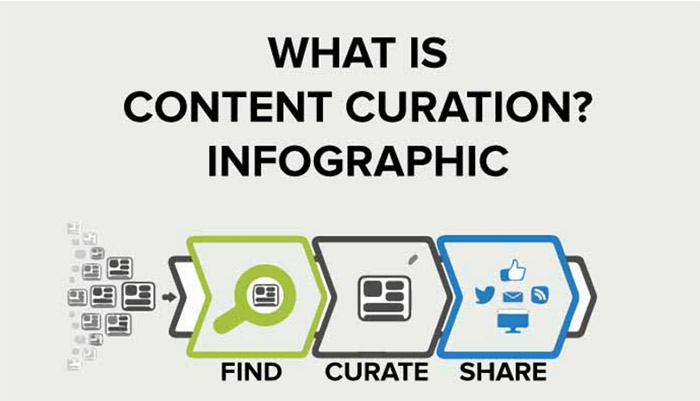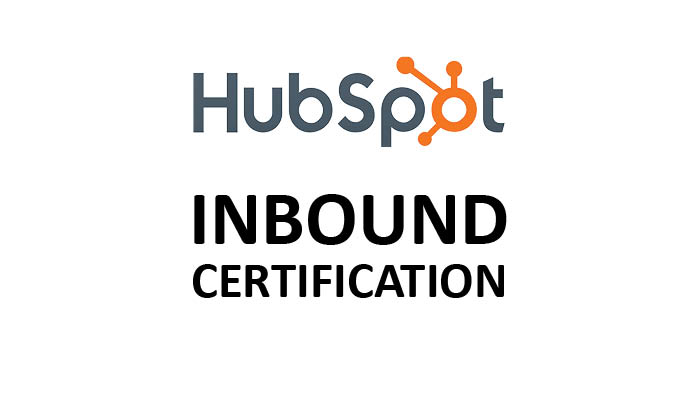Contents
- The Significance of Technical SEO for SaaS Companies:
- Technical SEO Fundamentals for SaaS Companies:
- Saas technical SEO audit:
- SaaS-Specific Technical SEO Considerations
- How to make your content SEO-ready
- Advanced SaaS Technical strategies for content
- Essential Technical SEO Tools for SaaS Websites
- Conclusion
In the dynamic realm of Software as a Service (SaaS), success hinges on a robust online presence and seamless user interactions. At the core of this digital strategy lies technical SEO, a multifaceted approach that optimizes your website for search engines, unlocking a wealth of opportunities for growth and visibility. This comprehensive guide delves into the intricacies of technical SEO for SaaS by agency, equipping you with the tools and strategies to elevate your search engine rankings, enhance user experiences, and drive lead generation.
The Significance of Technical SEO for SaaS Companies:
Technical SEO is the foundation upon which your entire SaaS SEO strategy is built. It encompasses the behind-the-scenes optimization of your website's technical aspects, ensuring search engine crawlers can effectively navigate, understand, and index your content. By implementing robust technical SEO practices, SaaS companies can reap numerous benefits, including
- Improved Search Engine Rankings: Effective technical SEO creates the ideal conditions for boosting your website's visibility in search engine results pages (SERPs). By optimizing your site's architecture, structure, and performance, you increase the likelihood of ranking higher for relevant keywords, maximizing your SaaS product's online presence.
- Robust Website Security and Trust: Proper technical SEO acts as a digital fortress, safeguarding your website from potential threats and vulnerabilities. This proactive approach not only protects your online platform but also fosters trust between users and your SaaS product, contributing to a positive brand reputation.
- Optimized User Experience (UX): A finely tuned technical architecture ensures faster page load speeds, seamless navigation, and optimal mobile responsiveness – all critical components of an exceptional user experience. By prioritizing technical SEO, you create a user-friendly environment that keeps visitors engaged and interested in your SaaS offering.
- Increased Lead Generation and Conversions: By maximizing your online visibility and providing a seamless user experience, technical SEO strategies directly contribute to higher organic traffic and lead generation for your SaaS products. This increased exposure acts as a catalyst for expanding your customer base and boosting conversions.

Technical SEO Fundamentals for SaaS Companies:
To unlock the full potential of technical SEO for SaaS, it's essential to master the foundational elements that underpin a successful strategy. Here are the key areas to focus on:
- Website Architecture and Navigation: Establishing a consistent and logical site architecture is the bedrock of efficient technical SEO. This includes implementing a clear navigational structure, organizing pages into thematic clusters, and ensuring effective link distribution. By optimizing your website's architecture, you simplify the indexing process for search engines, enhance the user experience, and boost overall visibility.
- Mobile-Friendliness and Responsive Design: In today's mobile-centric world, prioritizing mobile-friendly interfaces and responsive designs is no longer an option – it's a necessity. Technical SEO for SaaS companies must align with search engine preferences for mobile-first indexing, providing the best possible user experience across all devices.
- Page Loading Speed and Performance Optimisation: The speed at which your web pages load directly influences user satisfaction and search engine rankings. Addressing issues like excessive advertising, optimizing images, and choosing a reliable hosting platform are all critical steps in enhancing your site's performance and ensuring a smooth user experience.
- URL Structure and Hierarchy: Well-structured URLs not only improve readability but also contribute to a well-organized site structure. By optimizing your URL structures with relevant keywords and hyphen separation, you enhance user navigation and aid search engines in comprehending your content more effectively.
- Optimization of XML Sitemaps and Robots.txt Files: Ensuring the proper optimization of XML sitemaps and robots.txt files is crucial for search engines to efficiently crawl and index all pages on your website. This meticulous optimization increases your site's exposure and accessibility to search engine algorithms, boosting your online visibility.
Saas technical SEO audit:
A technical SEO audit aims to identify issues with the technical aspects of your site that affect your organic search performance. To conduct an audit, you can use an in-house SEO specialist, hire a SaaS SEO agency, or conduct the audit yourself using tools like Google Search Console (GSC) and Screaming Frog.
Optimizing on-page elements is crucial for improving search engine visibility and user experience for SaaS websites. Here's a checklist to ensure your on-page SEO is on point: Eliminate duplicate content to prevent confusion for search engines, ensure proper usage of HTML tags for content hierarchy and keyword alignment, identify and fix canonical tag issues, address response code problems like redirects and broken links, adapt to Google's page indexing approach for pagination, ensure proper robots.txt management, create a sitemap to guide search engines, and optimize alt text for accessibility and image search rankings.
Duplicate Content Check:
- Eliminate appreciably similar content to prevent confusion for search engines.
- Use noindex or nofollow meta tags on duplicate pages during corrections.
HTML Tag Verification:
- Confirm correct usage of H1, H2, and H3 tags for content hierarchy.
- Ensure alignment of HTML tags with relevant keywords for titles and subtitles.
Canonical Tag Inspection:
- Identify and fix issues like wrong tags, mixed signals, and near-duplicates.
- Regularly check canonical tags to support, not hinder, SEO strategy.
Response Code Understanding:
- Utilize tools like Screaming Frog or Ahrefs to analyze response codes.
- Address problems such as temporary redirects, excessive redirection hops, and broken internal links.
Pagination Awareness:
- Adapt to Google's page indexing approach.
- Verify no use of obsolete links, ensuring each page stands independently.
Robots.txt Management:
- Ensure proper usage to guide web crawlers and prevent unintentional indexing issues.
- Prefer using noindex tags over robots.txt to hide specific pages from search bots.
Sitemap Integration:
- Create a sitemap to guide search engines on which pages to index.
- Align indexed pages with the SaaS SEO strategy for optimal results.
Sitemap Integration:
- Create a sitemap to guide search engines on which pages to index.
- Align indexed pages with the SaaS SEO strategy for optimal results.
Alt Text Optimization:
- Prioritize optimization on key pages if needed due to website size.
- Enhance accessibility for visually impaired users and improve Google image search rankings.
SaaS-Specific Technical SEO Considerations
While the fundamentals of technical SEO apply to all websites, SaaS companies must address unique challenges and opportunities specific to their industry. Here are some key considerations:
- Handling Dynamic Content and Session-Based URLs
SaaS platforms often rely on dynamic content to tailor user experiences based on individual behaviors, including those related to SaaS email marketing. By adopting dynamic content methods and optimizing session-based URLs, you can create a personalized journey for each visitor, increasing engagement and promoting longer interaction times.
- SEO for Single-Page Applications (SPAs)
Single-page applications (SPAs) present unique SEO challenges due to their dynamic nature. To overcome these obstacles, it's crucial to incorporate server-side rendering and meta tag optimization, ensuring that search engines can properly index and rank your SPA content, maximizing exposure and accessibility.
- Managing User-Generated Content and Reviews
User-generated content, such as testimonials and reviews, can be a powerful asset for SaaS companies. Leverage this content for SEO optimization, enhancing the legitimacy of your SaaS firm and attracting new clients through authentic user experiences.
- Localization and International SEO for SaaS Companies
UAs your SaaS company expands into global markets, implementing localization and international SEO tactics becomes essential. Optimize your website for multiple languages and interfaces, aligning with Account-Based Marketing (ABM) principles to strengthen your global presence and resonate with diverse audiences
How to make your content SEO-ready
Keyword Research:
- Identify target keywords aligned with user search intent.
- Understand audience language and pain points.
- Analyze competitor keywords.
- Evaluate metrics: keyword density, search volume, trends, and difficulty.
Content Marketing Strategy:
- Develop high-quality, problem-solving content.
- Utilize channels like blogs, social media, email, etc.
- Refer to Skale's Piktochart case study for successful implementation.
- Showcase industry expertise.
Link Building Strategies:
- Understand the historical significance of links.
- Focus on quality over quantity
- Ensure organic, relevant, and authoritative links.
- Leverage links judiciously for SEO enhancement.
Advanced SaaS Technical strategies for content

As your technical SEO efforts mature, consider implementing advanced strategies to further elevate your online presence and stay ahead of the competition:
- Canonicalization and Duplicate Content Management
Safeguarding your search engine rankings requires effective management of duplicate content through canonicalization. This strategic approach signals search engines to prioritize a specific version of a page, mitigating the risk of diluted SEO efforts and potential negative impacts on search rankings.
- Structured Data and Rich Snippets
Optimizing structured data for rich snippets can significantly enhance your online presence. These enriched search engine results provide users with more informative and visually appealing snippets, increasing the likelihood of attracting clicks and driving organic traffic to your SaaS website.
- Accelerated Mobile Pages (AMP) for SaaS Websites
To enhance mobile responsiveness, consider implementing Accelerated Mobile Pages (AMP). This technology ensures lightning-fast loading speeds on mobile devices, positively impacting user experiences and potentially boosting search rankings, especially in mobile-centric search environments.
- Pagination and Infinite Scrolling Optimization
Opt for pagination over infinite scrolling to ensure proper organization of content on your SaaS website, catering to the needs of B2B ABM. This choice enhances user navigation, making it easier for visitors to find and consume relevant information without the risk of getting lost in an endless scrolling experience.
- HTTPS Migration and Security Considerations
OPrioritizing website security by migrating to HTTPS is essential for SaaS companies. Beyond aligning with Google's security parameters, this transition instills trust in users and prevents potential negative impacts on search rankings. A secure website is user-friendly and favored by search engines, contributing to a robust online presence.
Essential Technical SEO Tools for SaaS Websites
To conduct a comprehensive technical SEO audit and optimize your SaaS website, you need the right tools. Here are three essential tools to include in your SEO toolkit:
Screaming Frog
Purpose: A powerful website crawler that provides detailed insights into various aspects of on-site SEO.
Key Features:
- Identifies broken links, duplicate content, and missing or incorrect HTML tags
- Analyzes page titles, meta descriptions, and header tags for optimization
- Offers a comprehensive view of website structure and internal linking
Copyscape
Purpose: A plagiarism detection tool that helps identify duplicate content across the web.
Key Features:
- Scans the internet for content similar to yours, ensuring originality and avoiding duplicate content issues
- Useful for content creators and SEO professionals to maintain content uniqueness
Google Search Console
Purpose: A free tool by Google that helps webmasters monitor and troubleshoot the website's presence in Google Search results.
Key Features:
- Provides information on search queries, indexing status, and click-through rates
- Alerts about critical issues, such as indexing problems, security concerns, or mobile usability issues
- By incorporating these tools into your technical SEO audit process, you can identify and resolve issues related to crawlability, indexability, duplicate content, and on-page optimization, ultimately improving your SaaS website's search engine visibility and performance.
Conclusion
Achieving SaaS success through technical SEO necessitates a consistent and precise effort. With the right tools and strategies outlined in this comprehensive guide, SaaS companies are equipped to navigate the complexities of technical SEO, nurturing a sustainable online presence. While immediate rewards may be elusive, the long-term benefits make this journey essential. Embrace the challenges, adhere to these techniques, and watch your SaaS business not just survive but thrive in the highly competitive digital landscape.
Get The SaaS Marketing Toolkit
Frequently asked questions
What are the most important tech SEO elements for SaaS?
The most crucial tech SEO elements for SaaS businesses work together to create a seamless user experience and drive conversions:
- Meta page titles: Clear, keyword-rich titles help search engines and users understand your content.
- Fast loading times: Slow page load speeds lead to high bounce rates and poor user experiences.
- Intent-based keyword research: Targeting the right keywords aligned with user intent is key for attracting qualified traffic.
- High-quality content: Providing valuable, informative content establishes your brand as a trusted authority in the SaaS space.
- Regular tech SEO audits: Consistent audits identify and resolve issues, ensuring your website remains optimized for search engines.
Conducting regular SaaS SEO ROI analyses can help you optimize your efforts and allocate resources effectively.
How is SaaS Tech SEO different?
The primary difference between traditional SEO and SaaS Tech SEO lies in their goals. Traditional SEO aims to drive traffic and conversions, following a straightforward sales lifecycle. SaaS Tech SEO, however, focuses on nurturing and generating high-quality leads.
SaaS SEO emphasizes providing long-lasting value to users through comprehensive educational content, fostering trust, and demonstrating expertise. Keyword targeting is highly specific, attracting only the most relevant audience to engage with your brand.
Technical SEO vs. Content SEO: What is the difference?
Technical SEO examines the website's structure, architecture, and non-content aspects, ensuring a solid foundation for search engine crawlers and users. This includes elements like site speed, mobile responsiveness, and crawlability.
Content SEO, on the other hand, focuses on optimizing the actual content on the website, such as keyword research, readability, and creating a seamless user experience through high-quality, informative content.
Both technical SEO and content SEO, along with link building, are vital for improving visibility on search engines and driving targeted traffic to your site.
Technical SEO vs. Content SEO: Which is best?
Both technical SEO and content SEO are essential for improving search engine rankings and attracting qualified traffic.
Content SEO, on the other hand, focuses on optimizing the actual content on the website, such as keyword research, readability, and creating a seamless user experience through high-quality, informative content.
Technical SEO creates a solid foundation by ensuring a streamlined user experience, fast page load times, and addressing any technical issues that could hinder search engine crawling and indexing.
Content SEO enhances visibility through thorough keyword research and the creation of high-quality, engaging content aligned with user intent. It also supports link-building efforts.
An effective SEO strategy requires a balanced approach, combining technical SEO to optimize the website's infrastructure and content SEO to provide a valuable, user-centric experience.
Which technical SEO tools are best?
The best technical SEO tools depend on your specific needs and website size. However, some popular and versatile options include:
- Google Search Console (free, provides insights on how Google sees your site)
- Screaming Frog (paid, offers advanced filtering and customizable crawl settings)
- DeepCrawl (paid, provides in-depth data and insights)
- Semrush (paid, combines technical SEO with keyword research and competitor analysis)
When choosing a tool, consider features like advanced filtering, customizable crawl settings, and integration with other tools. Request trial periods to test the tool before committing to it.
Ultimately, the value lies in your ability to analyze the data and implement solutions, regardless of the tool you choose.
Is technical SEO for SaaS different?
While the fundamental principles of technical SEO apply across industries, there are some key differences when it comes to SaaS:
- Technical SEO for SaaS focuses more on ensuring crawlability, indexation, and optimizing internal linking structures.
- Unlike e-commerce sites, which prioritize product and duplicate content management, SaaS technical SEO emphasizes lead generation and nurturing through educational content.
- While maintaining a well-functioning website is crucial, the scale of technical SEO efforts for SaaS may be lower compared to larger e-commerce platforms.
The primary objective of SaaS technical SEO is to create a seamless, user-friendly experience that attracts and retains potential customers, ultimately driving conversions and revenue growth.
Related Blogs
We explore and publish the latest & most underrated content before it becomes a trend.
2 min read
How Hubspot Platform Is Changing Inbound Marketing Spectrum
By Praveen Kumar
Subscribe to Saffron Edge Newsletter!

Get The SaaS Marketing Toolkit










